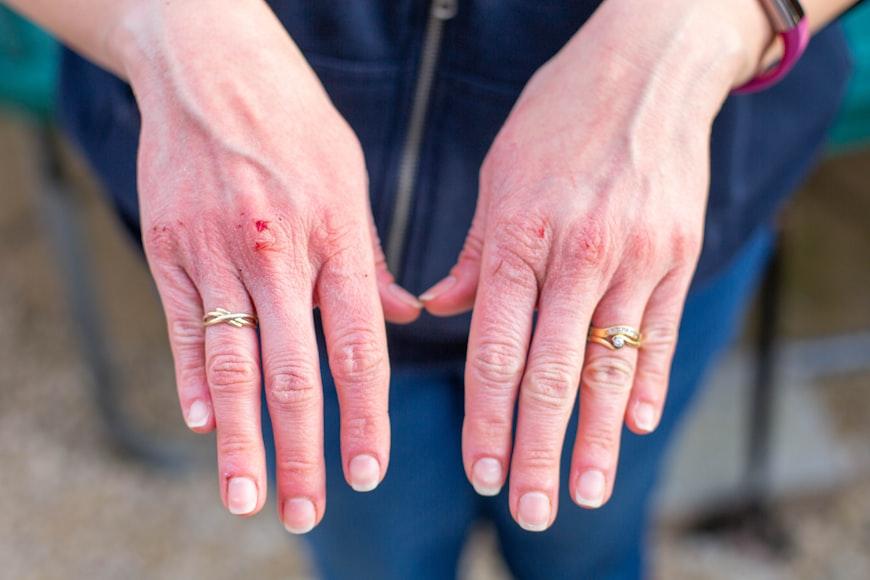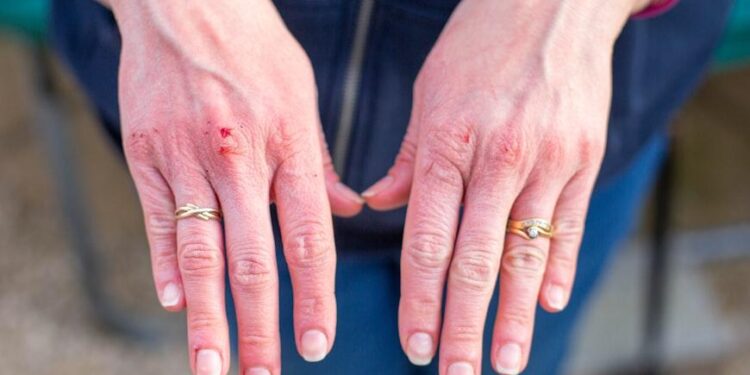Pressure sores, also known as bed sores, or decubitus ulcers, are painful injuries that happen when there is too much pressure on a part of the body for too long. What makes these sores different from other sores is that this type usually appears in areas where the bones are close to the skin. You would typically see bed sores in areas like the heels, hips, and lower back. The pressure blocks blood flow, which causes the skin and tissue to break down.
Also, pressure sores have been recognized for a long time with the term bed sores being used since the early 1800s. These sores were mostly seen in people who had been in bed for so long, like those with paralysis. Pressure sores are also common among older people or those who have long-term illness.

Stages of Bedsores (Pressure Sores)
Pressure sores go through different stages as they worsen. Each stage is worse than the previous stage, affecting the skin and tissue underneath.
Stage 1: Non-Blanchable Erythema
At stage 1, the skin isn’t broken, but you’ll notice a red area. This redness doesn’t go away or turn white when you press on it, which is why it is called non-blanchable. The skin feels warm or cold, and it could be firm, soft, or sometimes swollen. You’ll feel itchy or hot a little. This is the first warning sign that pressure damage is happening.
Stage 2: Partial Thickness Skin Loss
In stage 2, the outer layer of the skin called the epidermis and possibly some of the deeper layer dermis are damaged.
So you will likely see some skin loss in this stage. The sore would look like an open blister, a shallow wound, or a scraped area. It is usually red or pink in color, and they may be clear fluid if it looks blistered.
Stage 3: Full Thickness Skin Loss
By stage 3, the pressure sore has gone deeper into the skin, all the way through the fatty layer below. This is more serious than the previous stages because more skin layers are affected. At this point, you will see a deep open wound. The body fat may be visible, but you won’t see muscle, bone, or tendons yet. You might also see some dead or yellowish tissue called slough at the base.
Stage 4: Full Thickness Tissue Loss
Stage 4 is the most severe type of pressure sore. The wound now goes through all layers of skin and reaches deeper tissues like muscles, tendons, and even the bone. The wound is large, deep, and open. You may be able to see muscles, tendons, or bones at the bottom of the sore. Also, dead tissues called eschar and yellowish slough may also be present.
Unstageable Pressure Injury
Sometimes, it is hard to know how deep the damage goes because the wound is covered with dead skin and yellowish slough. You will see a sore covered with dark or thick tissues that hides the true depth of the wound. Because the depth cannot be seen, it is often referred to as unstageable, which means it has to be cleaned or debrid before doctors can tell what stage of sore it actually is.
Deep Tissue Pressure Injury
A deep tissue pressure injury starts from damage to the tissue underneath the skin, which is often from prolonged pressure that has been damaging the tissue slowly for a while. The surface may look fine or show only a little damage, but the deeper layers are seriously affected. You might see a dark purple or maroon-colored area on the skin. The skin might be firm or feel like a bruise. This type of injury can worsen quickly, even if the skin looks mostly okay on the outside. If it is left untreated, it can progress to stage 3 or 4.
Causes of Bedsores (Pressure Sores)
Constant pressure: When there is a constant pressure on the skin, especially in places that are bony, like the hips, heels, or lower back, blood flow to that area reduces. This pressure often happens when someone stays in one position for a long time, like lying in bed or sitting in a wheelchair. Normally, blood carries oxygen and nutrients, which helps the skin stay healthy. However, when pressure stops blood from flowing to an area, the skin and tissue starts to break and die. That is why people who are bedridden are often at a higher risk to get bed sores.
Shear: Shear happens when the skin moves in one direction while the bone beneath the skin moves to another direction. For example, if someone slides down in a hospital bed, their skin stays in place while the deeper tissues are pulled downwards. This stretching and pulling of the tissue can make it get damaged underneath the skin, even if the skin itself doesn’t look hurt.
Friction: Friction is when the skin rubs against something, like a bedsheet or clothing. This rubbing can damage the outer layer of the skin, making it more fragile and prone to sores, like bed sores. However, friction alone might not cause a deep sore, but it makes the skin weaker and more likely to break open, especially if there is pressure or shear in that area.
Moisture: Moisture on the skin from sweat, urine or wound drainage softens the skin and makes it more likely to break down. When the skin is moist for a long time, it tends to get weak, and even small amounts of pressure or friction can lead to a shear or sore.
Summary
Pressure sores, also known as bedsores, are skin wounds caused by excessive pressure on a specific part of the body over a long period of time. This pressure blocks blood flow, causing the skin and tissue beneath to be injured and breakdown. These sores are commonly found in areas where bones are close to the skin, such as the hips or heels.
Bedsores go through various stages, beginning with red skin, then an open sore, and finally severe wounds that can reach the muscle or even bone. People who spend lengthy periods of time in bed or sitting, such as the sick or old, are more likely to develop these sores.

















